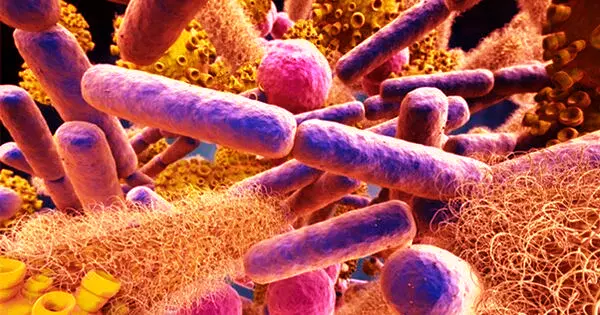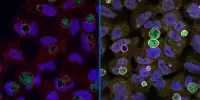Many people are aware that gut bacteria are beneficial to health. Given their geographical location, you might assume that their role is solely digestive. However, evidence is mounting that the microbes in our intestines have significant interactions with our minds – and hearts. Gut bacteria have been linked to depression, anxiety, and emotional processing areas of the brain. These areas of the brain share brain circuitry that influences cardiovascular issues like blood pressure.
Researchers describe in a new study how gut bacteria can evolve over time, becoming more pathogenic by gaining the ability to migrate across the gut barrier and persist in organs other than the intestine, thereby driving chronic inflammation and associated pathologies.
Gut microbes have been linked to both good health and disease progression, including autoimmune disorders, inflammatory bowel disease, metabolic syndrome, and even neuropsychiatric disorders.
These bacteria are basically pre-adapted to exist in organs other than the intestine. We believe that the preferential transmission of non-pathogenic strains between individuals causes this evolutionary process to restart in each new host.
Noah Palm
One popular explanation for these negative outcomes is the “leaky gut” hypothesis, which states that potentially harmful bacteria escape the intestine, triggering a chronic inflammatory response that can contribute to a variety of diseases.
“How potentially pathogenic bacteria can exist in healthy people for decades with no apparent health consequences has been one mystery,” said Noah Palm, assistant professor of immunobiology at Yale.
In a new study published, Palm and a team of Yale scientists offer new insights into this mystery. Writing in the journal Nature, they describe how gut bacteria can evolve over time, becoming more pathogenic by gaining the ability to migrate across the gut barrier and persist in organs outside of the intestine, thereby driving chronic inflammation and associated pathologies.
The Yale team investigated the genetics and behavior of a potentially pathogenic bacteria species that they introduced into germ-free mice, a species that lacks its own gut microbes. They discovered that these microbes diverged into two distinct populations over time: one that behaved similarly to the ancestral strain, and another that acquired tiny DNA mutations that allowed them to live in the mucosal linings of the intestine and persist in lymph nodes and the liver after escaping the gut.

Unlike traditional pathogens that prompt rapid immune clearance, these small colonies of relocated bacteria remain semi-hidden in organs and can avoid the attention of the immune system — at least temporarily. However, the authors found that their presence over time can eventually trigger inflammatory pathologies such as autoimmune diseases. This phenomenon may at least partially explain why some people with potentially pathogenic bacteria never get sick, but why the risk of illness increases with age, the researchers say.
According to the researchers, this ability of gut bacteria to become more pathogenic is driven by a phenomenon known as “within-host evolution,” which explains why individual bacterial species living in our intestines are able to adapt and evolve over the course of our lifetimes. This finding implies that environmental factors that influence the rate or trajectory of within-host evolution will have a significant impact on the development of microbiota-driven disease.
People who eat a healthy diet, for example, have diverse bacterial communities in their guts. This means that many different microbes must compete for space and resources, limiting the population size of any individual species and, as a result, decreasing the likelihood of potentially harmful variants emerging and escaping the gut. However, in less diverse bacterial communities, more niches may open up within the intestines, increasing the likelihood of harmful bacterial variants arising, according to Palm.
“These bacteria are basically pre-adapted to exist in organs other than the intestine,” Palm explained. “We believe that the preferential transmission of non-pathogenic strains between individuals causes this evolutionary process to restart in each new host.”
Understanding the role of within-host evolution in shaping bacterial behavior in the gut, he added, may eventually lead to novel therapeutic interventions that can restrict or redirect this process, preventing the development of a variety of diseases associated with “leaky gut.”
















